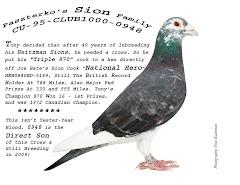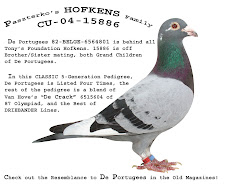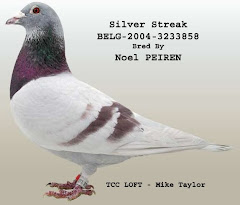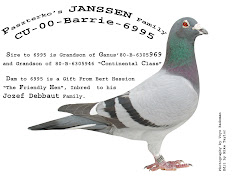Ker Than
for National Geographic News
September 29, 2009
After surviving countless battles, a giant T. rex was ultimately taken down by a microscopic parasite akin to one carried by modern pigeons, scientists say.
The finding is a new interpretation of multiple holes in the jawbone of "Sue," the largest and most complete Tyrannosaurus rex fossil yet found, which is on display at the Field Museum in Chicago.
Initially researchers had said the holes are bite wounds made by another T. rex. But most paleontologists now agree that the holes are too neat and smooth to have been caused by teeth scraping across bone.
In a new study, researchers instead propose that the holes are lesions made by an ancient version of trichomonosis, a single-celled parasite that infects the throats and beaks of modern birds.
Pigeons carry trichomonosis without suffering any symptoms. But the birds are common prey for falcons and other raptors, which then become infected and can also transmit the disease.
"There's a possibility that this disease is quite old," said study author Ewan Wolff, a paleontologist at the University of Wisconsin-Madison.
T. Rex Infection
Sue was discovered in 1990 in South Dakota. Although the dinosaur's sex is unknown, the fossil was nicknamed for the female fossil hunter who found the bones.
The 42-foot-long (12.8-meter-long), 7-ton dinosaur lived about 67 million years ago, during the late Cretaceous period.
In addition to the jawbone holes, the fossil shows evidence that Sue survived multiple fractured ribs, arthritis, and savage clashes with other dinosaurs to reach the ripe old age of 28.
How the huge dinosaur died, however, has been unclear. Despite Sue's multiple injuries, the animal seems to have lived with most of them for years.
In birds, trichomonosis causes inflammation in the beak and upper digestive tract, which makes feeding and even breathing very difficult.
Birds' bodies react by sealing off infected tissue, but over time byproducts from this immune response can damage bone, creating lesions.
Sue had about ten such lesions on her jaw, some of them large enough for a human adult to poke a finger through.
Based on the size and number of lesions, the team thinks Sue's disease was at an advanced stage and may have been so severe that the dinosaur starved to death.
Parasite Link
The researchers also found evidence of possible trichomonosis-like infections in two other tyrannosaurid species, Daspletosaurus and Albertosaurus.
Sue may have contracted the disease after having been bitten by another T. rex during a fight or by cannibalizing the infected bodies of other tyrannosaurids, Wolff said.
The finding adds a new twist to the evolutionary connection between dinosaurs and modern birds.
That's because parasites tend to evolve with their hosts, Wolff said. Since tyrannosaurids are among the dinosaurs thought to be avian ancestors, it wouldn't be surprising for the same parasite that infected tyrannosaurids to now infect birds.
Read more ...















